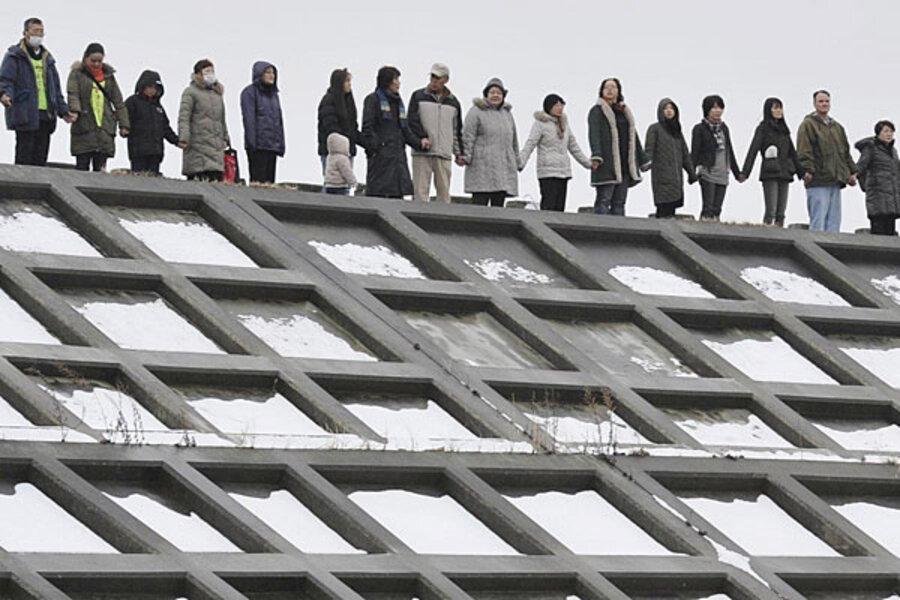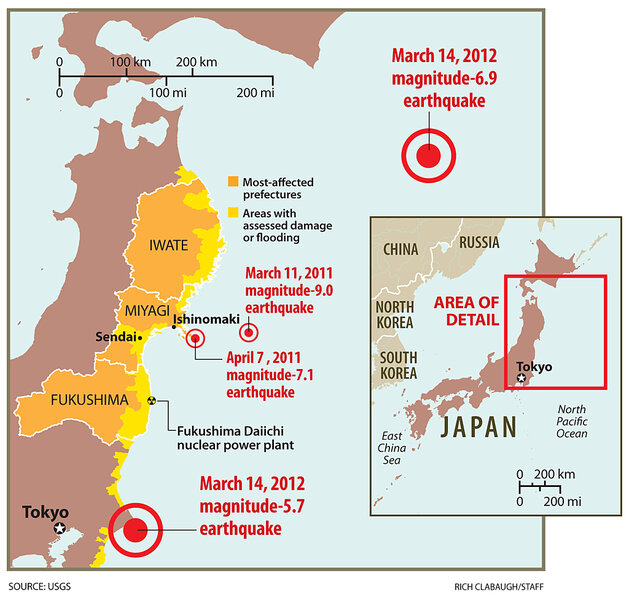Japan earthquake: Northern Japan rattled by 6.8 earthquake
Loading...
| Tokyo
A series of earthquakes rattled Tokyo and northeast Japan late Wednesday evening but caused no apparent damage or injury in the same region hit by last year's devastating tsunami.
The strongest tremor, off Hokkaido island, was 6.8 magnitude and caused tidal changes that prompted some communities to issue evacuation orders or tsunami advisories to residents nearest the coast.
A swelling of 20 centimeters (8 inches) was observed in the port of Hachinohe in Aomori, northern Japan, about one hour after the tremor. Smaller changes were reported in several locations on Hokkaido island and Aomori prefecture.
The Japan Meteorological Agency lifted all tsunami advisories about an hour and half later.
Within about three hours, a magnitude-6.1 quake shook buildings in the capital. It was centered just off the coast of Chiba, east of Tokyo, at a rather shallow 15 kilometers (9 miles) below the sea surface.
Narita International Airport briefly closed runways for inspection but later resumed operation. Several local train services were suspended for safety checks.
There were no abnormalities reported at nuclear power plants after the two earthquakes, operators said. Nearly all of Japan's nuclear plants are offline for safety inspections.
The temblors were considered aftershocks of last year's massive quake, Meteorological Agency official Akira Nagai told a news conference, warning residents to stay away from buildings and plots already loosened by that tremor and the thousands of aftershocks that have followed.
The town of Otsuchi in Iwate prefecture, where more than 800 died in last year's tsunami, issued an evacuation order to coastal households as a precaution after the 6.8 quake, said prefecture disaster management official Shinichi Motoyama. No damage or injury was reported, he said.
Iwate was heavily damaged by last year's earthquake and tsunami. Thousands of aftershocks have shaken the region since then, nearly all of them of minor or moderate strength.
The magnitude 9.0 earthquake and tsunami on March 11, 2011 left some 19,000 people dead or missing.
Japan marked the first anniversary of the disasters on Sunday, as the country still struggles to rebuild.








